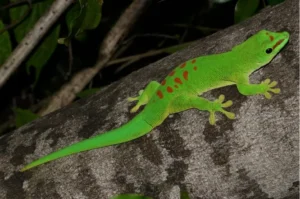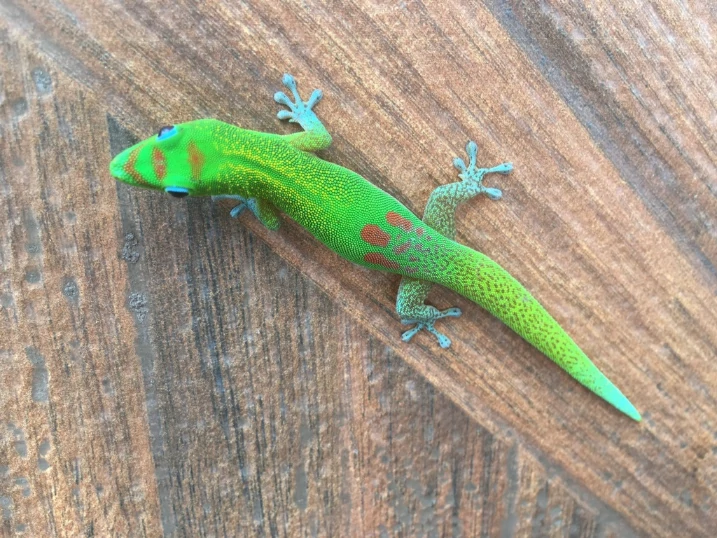If you’ve ever seen an alligator lying in the sun by a swamp and then spotted a small lizard doing the same thing on a rock, you might have thought they look a bit like distant cousins.
Both have scaly skin, long tails, and a serious love for warmth. But are they really related? Are lizards connected to alligators?
Yes, lizards and alligators are distant relatives. They come from the same very old reptile ancestor, but they’re on completely different branches of the reptile family. They’re both reptiles, but they split off around 250 million years ago. Lizards belong to a group called Lepidosauria, which also includes snakes. Alligators are part of Archosauria, the same group that gave rise to crocodiles, dinosaurs, and even birds.
So yes, in a way, lizards and alligators are related, but only if you go back really far in history.
How Lizards And Alligators Took Different Paths
Think of the reptile family tree like a fork in the road. Lizards and alligators took very different paths a long time ago. Both started from early reptiles that lived before the dinosaurs.
Over time, these reptiles split into two main groups.

One line, Lepidosauria, led to lizards, snakes, and the tuatara. The other line, Archosauria, led to crocodiles, alligators, dinosaurs, and birds.
That means alligators are actually closer to birds than they are to lizards. It’s kind of crazy to think about; a gecko on your wall and an alligator in a swamp both started from the same ancient reptiles, but they’ve been on completely different journeys ever since.
What Lizards And Alligators Still Have In Common
Even though they split millions of years ago, lizards and alligators still share some old reptile traits.
They both:
-
Have dry, scaly skin that keeps water in.
-
Lay eggs with shells instead of giving birth to live babies (though a few lizard species do have live babies).
-
Breathe with lungs.
-
Need heat from the sun. They’re both cold-blooded.
These traits go back to their shared ancestors, the reptiles that first crawled onto land long before dinosaurs.
How They Ended Up So Different
While lizards and alligators started in the same place, they went very different directions over time.
Lizards stayed small and flexible. They learned to live just about anywhere; deserts, jungles, rocky cliffs, even your backyard. Their bodies are light, and most are quick movers that can scurry or climb to escape predators.

Alligators, on the other hand, became big, heavily armored hunters that like the water. They have massive jaws, thick skin, and tails made for swimming. Their bodies are built for power and sneaky attacks, perfect for catching prey near riverbanks.
It’s like comparing a bicycle to a tank. They both move, but one’s built for speed and the other for strength.
Alligators Are Archosaurs, Not “Big Lizards”
People sometimes call alligators “giant lizards,” but that’s not really right. They may look similar on the outside, but inside, their bones and organs tell a different story.
Alligators belong to Archosauria, which includes dinosaurs and birds. Lizards belong to Lepidosauria, with snakes. That means an alligator is closer to a bird than to any lizard.
You can even see the connection between alligators and birds if you look closely:
-
Both build nests and watch over their eggs.
-
Both have a four-chambered heart (most reptiles only have three).
-
Both make sounds to communicate.
So if you hear an alligator bellowing in a swamp, think of it as a distant cousin of a rooster crowing in the morning.
What Fossils Show About Their Connection
Fossils help scientists track where all reptiles came from. The earliest reptiles lived more than 300 million years ago, long before dinosaurs.
Those early reptiles split into two big lines: one that led to lizards and snakes, and one that led to alligators, crocodiles, dinosaurs, and birds.
Over millions of years, lizards spread into thousands of species. Alligators stayed on the archosaur side, evolving into semi-aquatic hunters with strong armor and powerful jaws.
Even though they share a very old ancestor, there’s now a huge gap between them.
What They Do The Same Way Today
Even though they’re distant cousins, lizards and alligators still act in some similar ways:
-
They both bask in the sun. Since they can’t make their own heat, they need sunlight to warm up.
-
They both shed their skin. Lizards shed in pieces, while alligators shed small scales one at a time.
-
They both hide. Lizards hide to avoid predators, alligators hide to catch prey.
But that’s where the similarities stop. A lizard might eat a cricket. An alligator might eat the lizard.
Why Alligators Are Closer To Dinosaurs Than Lizards
If you look at their skeletons, you can see why alligators are closer to dinosaurs.
Both share:
-
A similar skull shape with holes behind the eyes, called diapsid skulls.
-
Bony plates and strong limbs under the body instead of sticking out to the sides.
-
A special ankle that helps with strong, upright movement.
That’s why scientists call crocodiles and alligators “living fossils.” They haven’t changed much in the last 80 million years. When you see one today, you’re basically seeing what some ancient reptiles looked like during the age of dinosaurs.
Lizards went a different way; evolving lighter bones, flexible tails, and climbing skills that helped them survive in smaller, faster spaces.
How Closely Related Are They, Really?
They’re related in the sense that they both come from the same ancient reptiles, but they’re not close cousins.
Think of it like this:
-
Lizards are from the “Lepidosaur” branch.
-
Alligators are from the “Archosaur” branch.
-
Their common ancestor lived about 250–300 million years ago.
That makes them very distant cousins, the kind you’d only find if you traced your family tree back hundreds of millions of years.
Why People Mix Them Up
It’s easy to see why people confuse them. Both have scaly skin, long tails, and love sunbathing. Movies and cartoons often lump reptiles together as one big family.

But looks don’t tell the full story. Under the surface, lizards and alligators are built very differently; from their skulls and hearts to their DNA.
So when you see an alligator, don’t think “giant lizard.” Think “armored cousin of dinosaurs.” And when you see a lizard, think “smaller, faster side of the reptile family.”
A Quick Look At Their Key Differences
Here’s an easy way to see how far apart they really are:
| Feature | Lizards | Alligators |
|---|---|---|
| Family Group | Lepidosauria | Archosauria |
| Closest Living Relatives | Snakes | Crocodiles & Birds |
| Typical Size | Inches to a few feet | Up to 15+ feet |
| Skin Type | Thin, smooth, often shiny | Thick, armored, rough |
| Egg Care | Usually none | Builds nest and guards eggs |
| Heart Type | 3 chambers | 4 chambers |
| Movement | Quick, side-to-side | Slow, strong, upright stance |
| Common Habitat | Land, trees, rocks | Rivers, swamps, lakes |
That table shows it well, same reptile roots, very different families.
What This Shows About Reptiles
The story of lizards and alligators shows how different reptiles can become. They’ve evolved into completely different animals while still keeping the same basic traits; scales, cold-blood, and egg-laying.
It also shows how old reptiles are. Long before mammals or birds appeared, reptiles were already all over the planet, living in deserts, forests, and oceans.
Today, lizards are the small, quick survivors. Alligators are the ancient giants that didn’t change much at all.
Conclusion
Lizards and alligators might look like they’re from the same family, but they’re not close cousins.
They both come from reptiles that lived over 250 million years ago, yet they split into completely different branches soon after.
Lizards are from the lepidosaur branch. Alligators are from the archosaur branch, the same branch that includes dinosaurs and birds.
So while they share very distant roots, they’ve spent millions of years going their own ways.
Hi, my name is Ezra Mushala, i have been interested animals all my life. I am the main author and editor here at snakeinformer.com.

